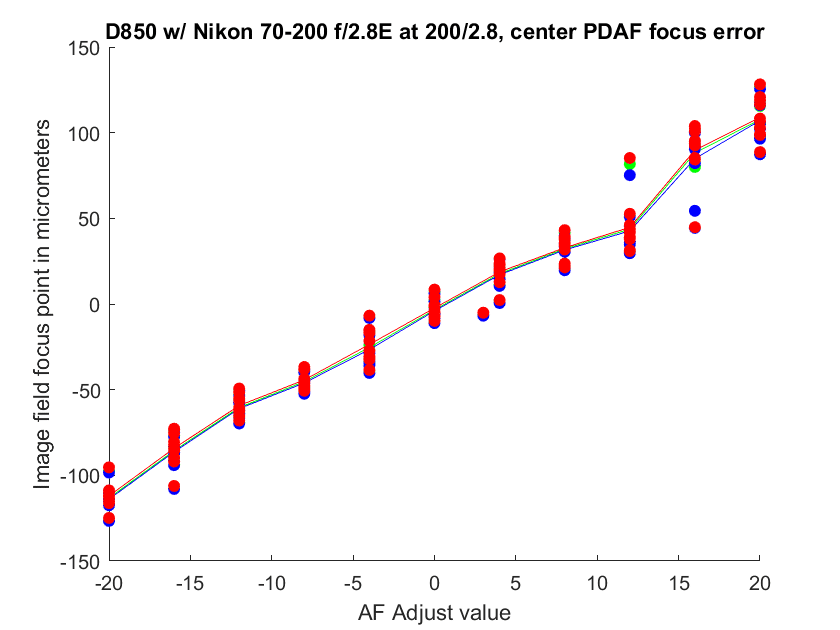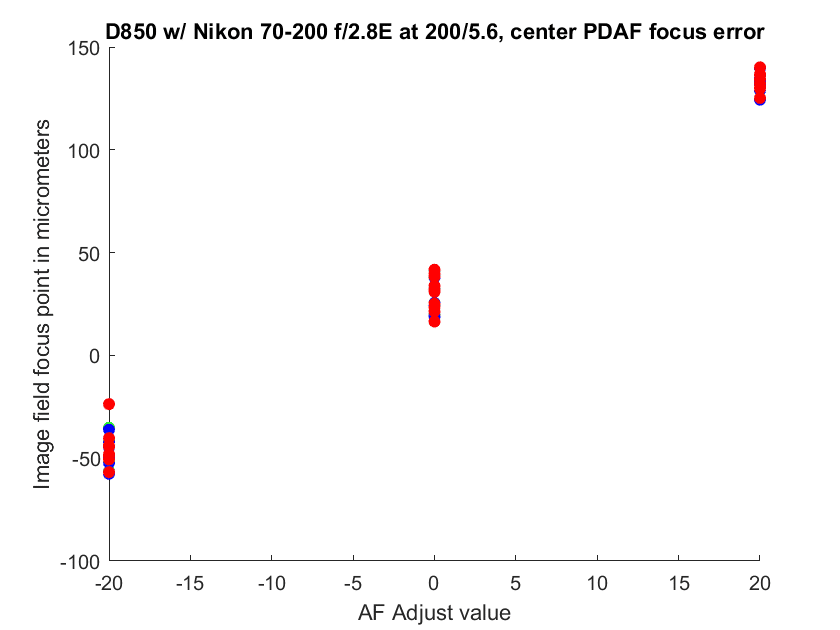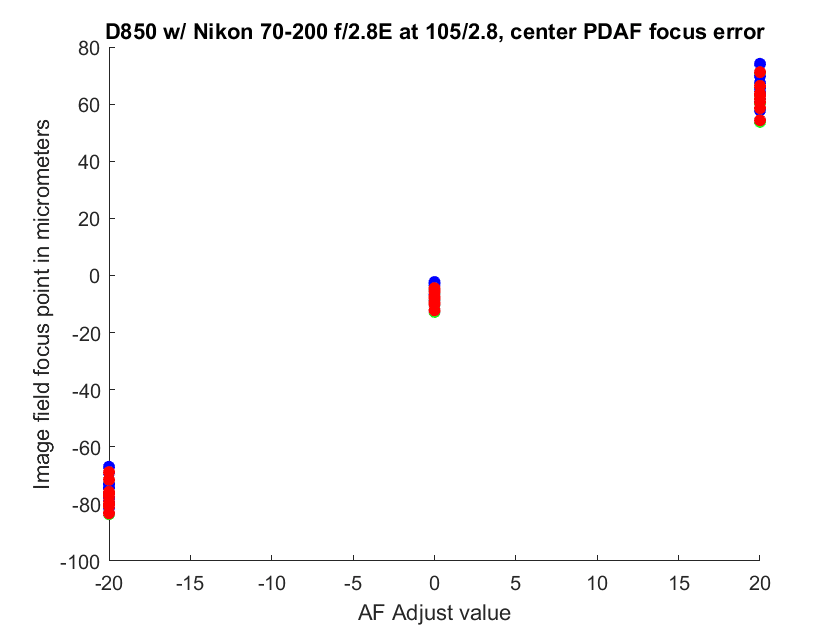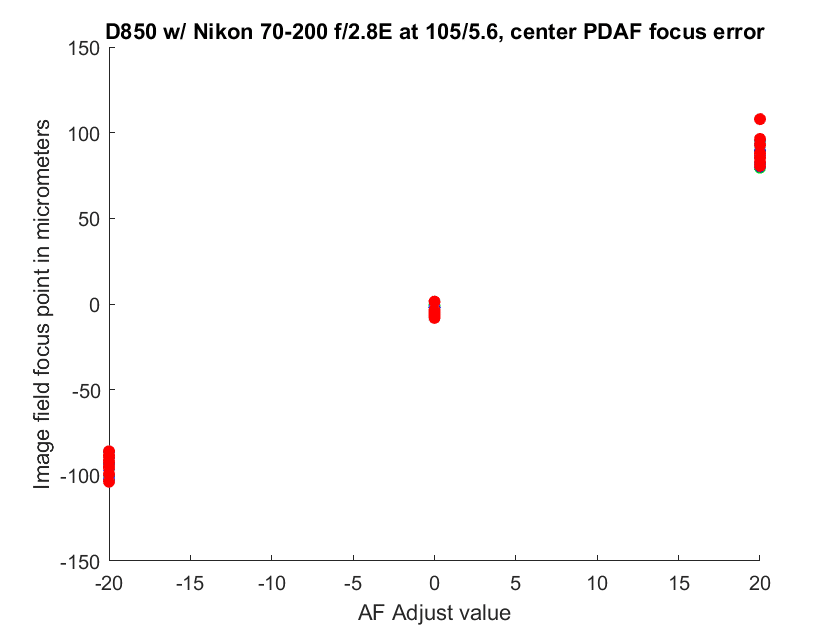This is a continuation of a series of posts on the Nikon D850. The series starts here. You should be able to find all the posts about that camera in the Category List on the right sidebar, below the Articles widget. There’s a drop-down menu there that you can use to get to all the posts in this series; just look for “D850”.
I’ve been testing different focal length lenses on the D850 to see how big a step in the sensor plane the camera makes for each step in the AF Adjust value. With both the 105/1.4E and the 58/1.4, it looked like about 4 micrometers, although there was some variation. Today, I’ll show you what happens with the Nikon 70-200 f/2.8E lens.
Here are the results at 200 mm and f/2.8:
I’ve plotted all three Adobe RGB channels. They all focus at about the same place, which means there is very little longitudinal chromatic aberration (LoCA). There is slightly more than 200 micrometers (um) of focal plane shift over a range of 40 AF Adjust values, for a shift of about 5 um per step. You can see that I goofed and made one shot with an AF value of +3.
It occurred to me that I really didn’t need all the intermediate AF Adjust values for this little exercise, so I simplified things when I ran the test at f/5.6:
A bit under 5 um per step.
Changing the focal length to 105 mm and switching back to f/2.8:
This is looking like a bit under 4 um per step.
And finally, at f/5.6 again, staying at 105 mm:
Now the steps look to be about 4.5 um.
I’m going with 4 um, and it looks like, if it is dependent on focal length, it’s a quite weak dependence.




Leave a Reply